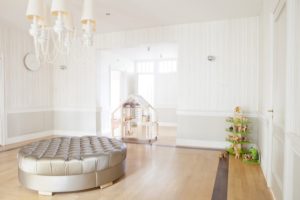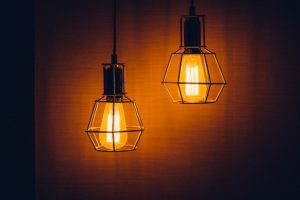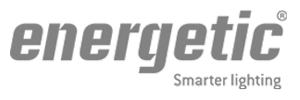 Recessed lights are basic but essential light fixtures that can easily breathe life into any boring space in your Scottsdale home. Sometimes called high hats, pot lights, and can lights, recessed lights usually have two components: a trim and a housing.
Recessed lights are basic but essential light fixtures that can easily breathe life into any boring space in your Scottsdale home. Sometimes called high hats, pot lights, and can lights, recessed lights usually have two components: a trim and a housing.
The trim is what you can see protruding from the surface and comes in a wide variety of shapes, sizes, and finishes.
The housing, on the other hand, is what sits above the ceiling line and holds the LED light bulb in place.
Choosing a recessed light for your space can be challenging, especially if you’re not too familiar with the different types of lighting. Below is a quick guide to help you understand the basics of recessed lights and how to choose the best fixtures for your home.
Think About Aperture Size
When choosing between different sizes of recessed lights, focus on the aperture size of the trim.
Basically, this tells you how wide or narrow the opening of the trim, through which the light shines through, is. Keep in mind that the size of the aperture is not equal to the size of the trim—the former will always be smaller. The “standard” aperture size is 6-inches, but you can find models with 5- to 4-inch apertures.
Just remember that smaller the aperture, the narrower and focused its beam angle will be. Conversely, large apertures have a wider beam angle. These factors will be important when determining how many recessed lights you need in a particular room.
Housing and Installation
Generally, there are two types of housing: remodel and new construction.
New construction housings are ideal for spaces where the ceiling is not fully finished. These are designed to be installed between ceiling joists.
Remodel housings are best for rooms with an existing ceiling. Holes need to be cut into the sheetrock or drywall where the lights will be installed. The light fixtures, in turn, are held in place using clips. These lights take a little construction work, but they’re relatively easy to set up.
Choose the Right Trim
You need to consider aesthetic and application when choosing your trim. Round trims are the most common, but some designs integrate a more modern shape like squares or even ovals. Decorative flanges and lenses that are made with crystal, metal, and glass can also give the fixture a bit more life.
Generally, if you want to light a specific feature or object, use a gimbal or adjustable trim so you can aim the light at the feature or object. Water-safe trims are needed if you are going to place recessed lights in the shower or in an outdoor area.
If the recessed fixtures will be used for general lighting, you’ll want a trim with large grooves that absorb excess light and reduce glare. These are also known as baffle trims and usually come in black or white.
When in Doubt, Work with an Expert
Many believe that recessed lights cost a lot of time, money, and effort to install. Modern models, however, are actually becoming more compact and easier to install. New systems not only perform well, but you can install them without breaking the bank.
It’s best to work with someone who’s familiar with lighting and fixtures, like an electrician or a contractor. They can help you make a lighting plan to make sure the fixtures you want match the lighting needs and style of the space.


 Apartment Lighting
Apartment Lighting Area Lighting
Area Lighting Automotive Lighting
Automotive Lighting Building Wall Pack Lighting
Building Wall Pack Lighting Canopy Lighting
Canopy Lighting High & Low Bay Lighting
High & Low Bay Lighting Industrial Lighting
Industrial Lighting Parking Lots & Garages
Parking Lots & Garages Pathway Lighting
Pathway Lighting Retail Lighting
Retail Lighting Stairwell Lighting
Stairwell Lighting























